
UiFlow Tutorial
UiFlow1 Quick Start
2. Firmware & Program 1.0
UiFlow1 Development Guide
Project Management
Use LTE network
UiFlow1 Blockly
Event
UI
Unit
Module
Hat
UiFlow2 Quick Start
2. Firmware & Program 2.0
UiFlow2 Development Guide
UI Editor
Device Security & Sharing
UiFlow2 Video Column
UiFlow2 Device Data Sharing (EzData 2.0)
EzData 2.0 is an IoT cloud data storage service provided by M5Stack that enables different devices to insert or retrieve data into/from a storage queue using a unique token, achieving data sharing among devices.
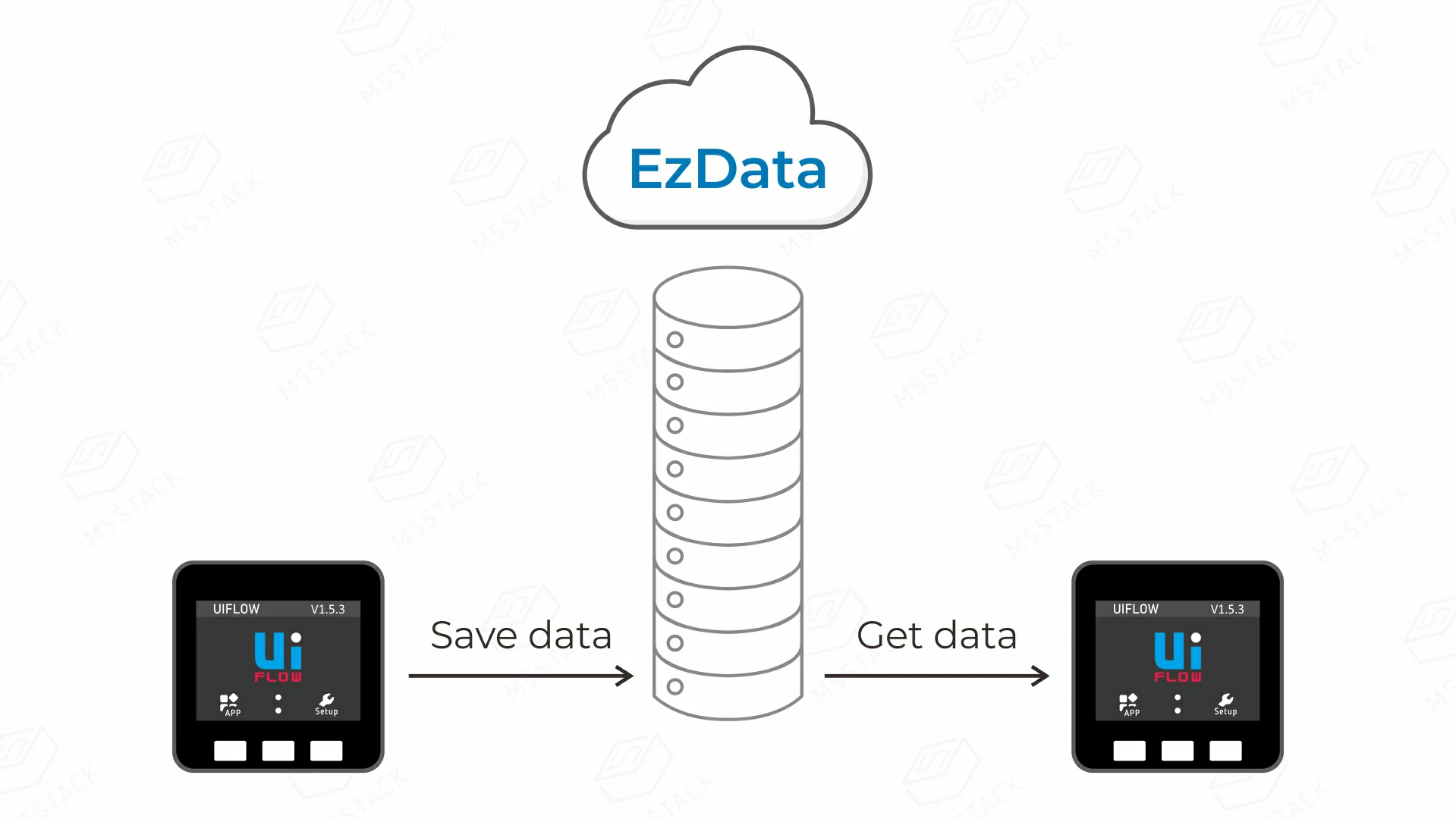
Creating EzData Entries
1.Creating EzData Entries via EzData Manager
Click on the EzData icon in the UiFlow2 WebIDE footer, select the device for managing data, and click "Add key" to add key-value pairs, storing data in the cloud.
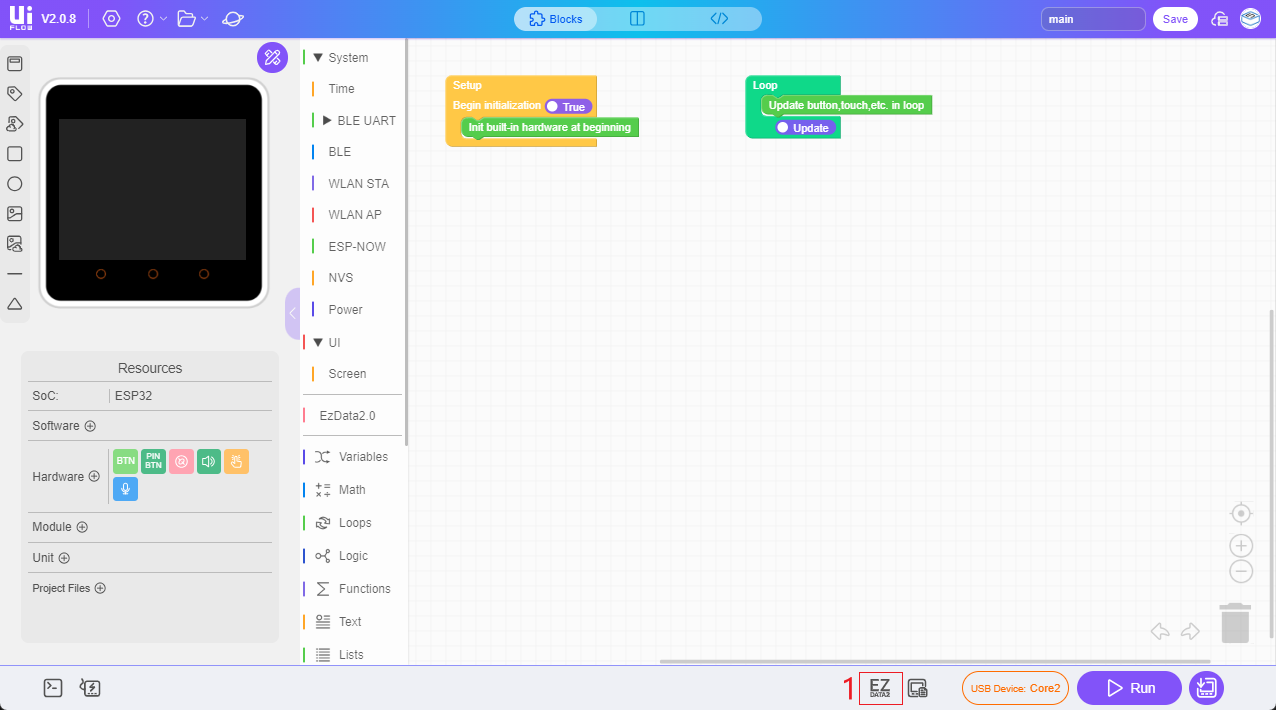
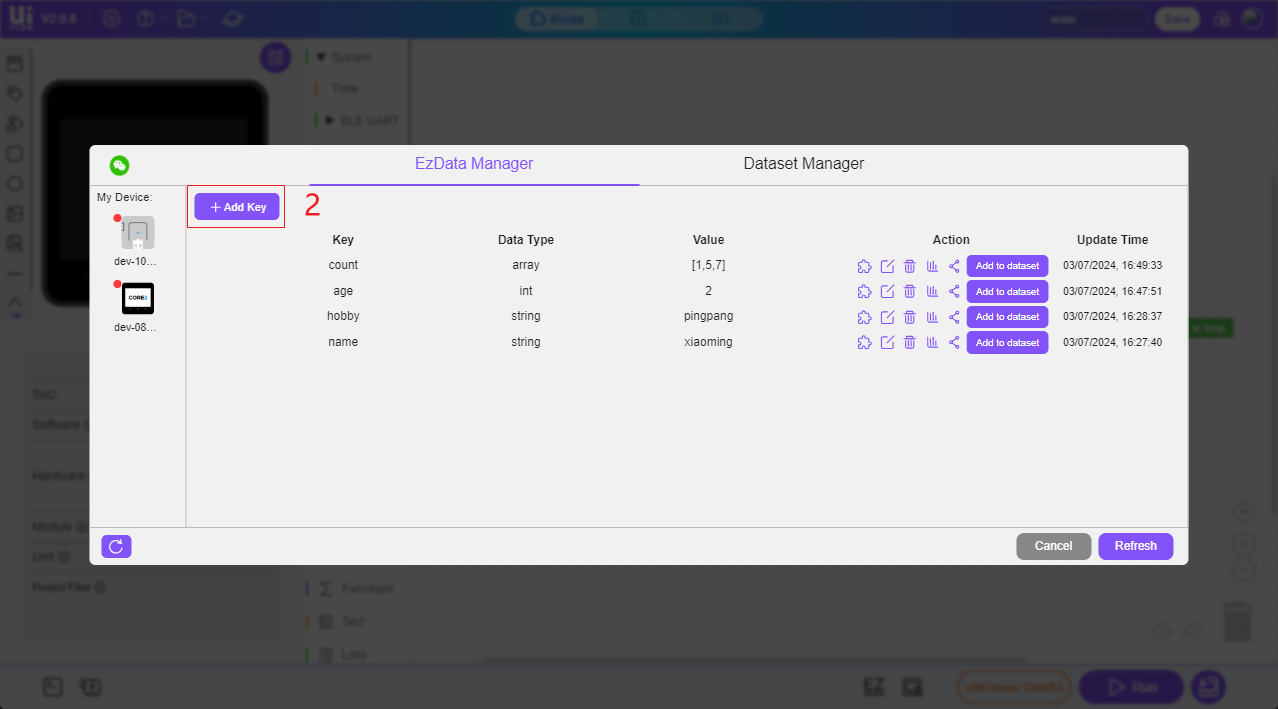
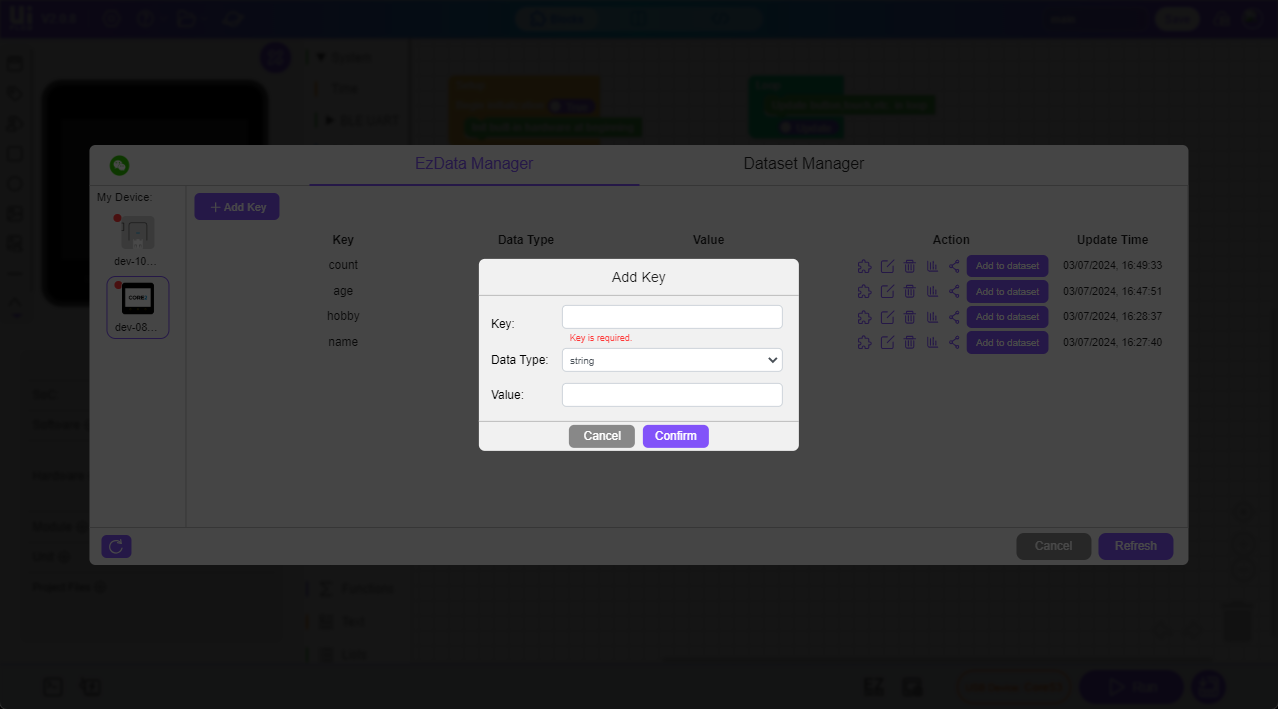
2.Creating EzData Entries with EzData Blockly
Drag and drop EzData Blockly blocks to design programs, enabling basic operations such as cloud data storage, retrieval, modification, and deletion.
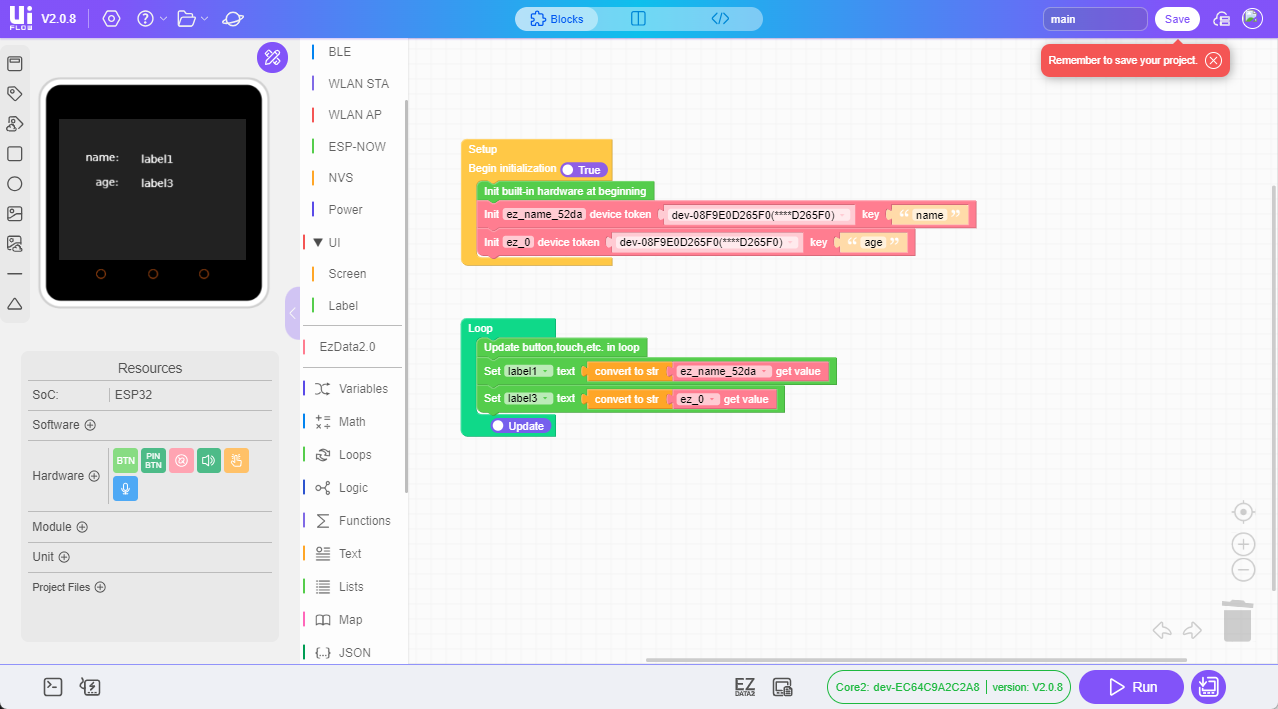
3.Creating EzData Entries via EzData Dashboard
Log in to the EzData Dashboard ,and utilize backend API calls, passing in the device's unique token to perform CRUD (Create, Read, Update, Delete) operations on data.
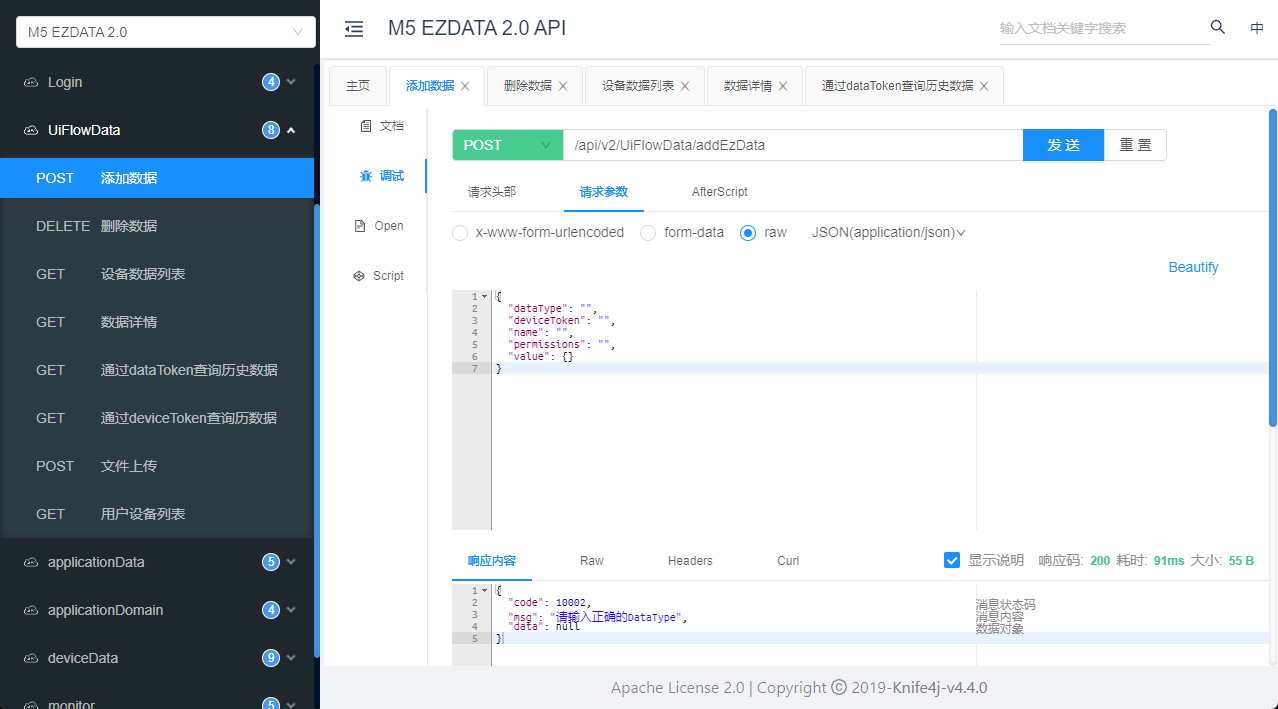
Creating Data Sets
The DataSet Manager is a module for centrally managing scattered EzData entries. Creating a data set does not affect the EZData data stored in the cloud.
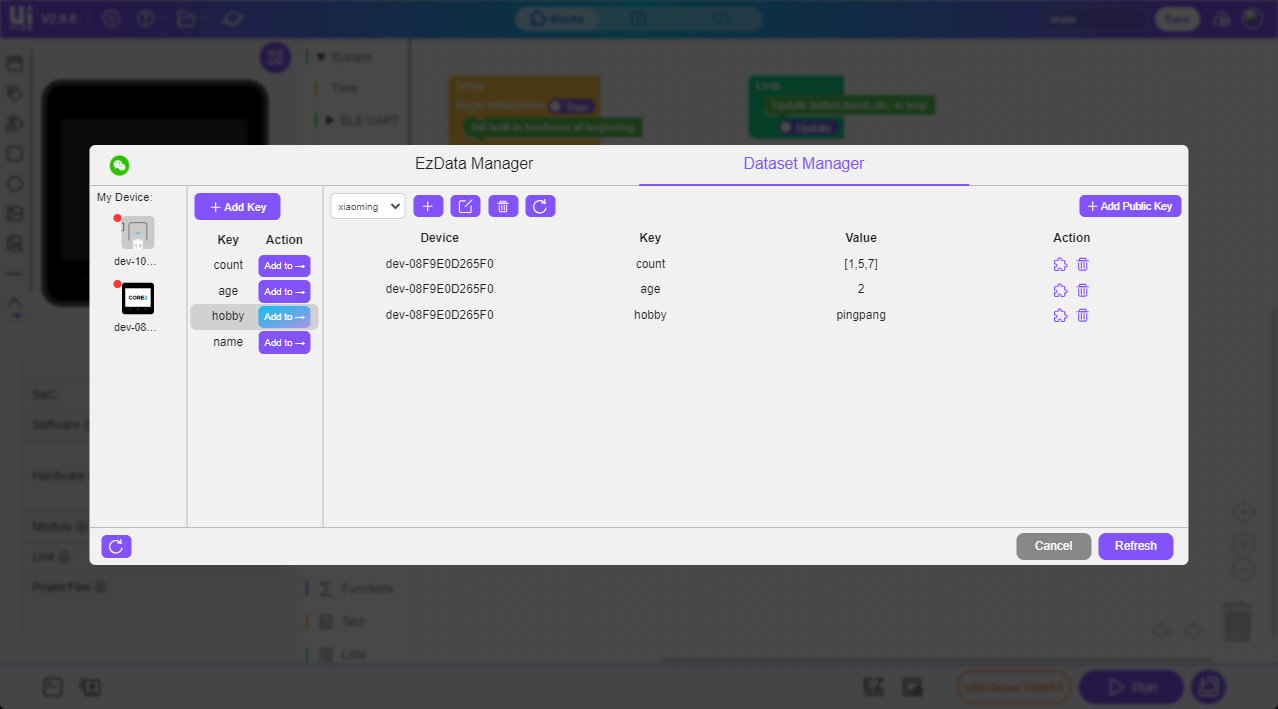
Accessing Cloud Data with UiFlow2
Steps to access cloud data using UiFlow2:
- 1.Ensure the device is connected to UiFlow2 WebIDE via Wi-Fi.
- 2.Obtain the device's unique
token: 795efd86c2a6478eb9c3bb414376bb6b from the EzData Manager. - 3.Drag and drop Blockly blocks to set up the program, then click
Run.
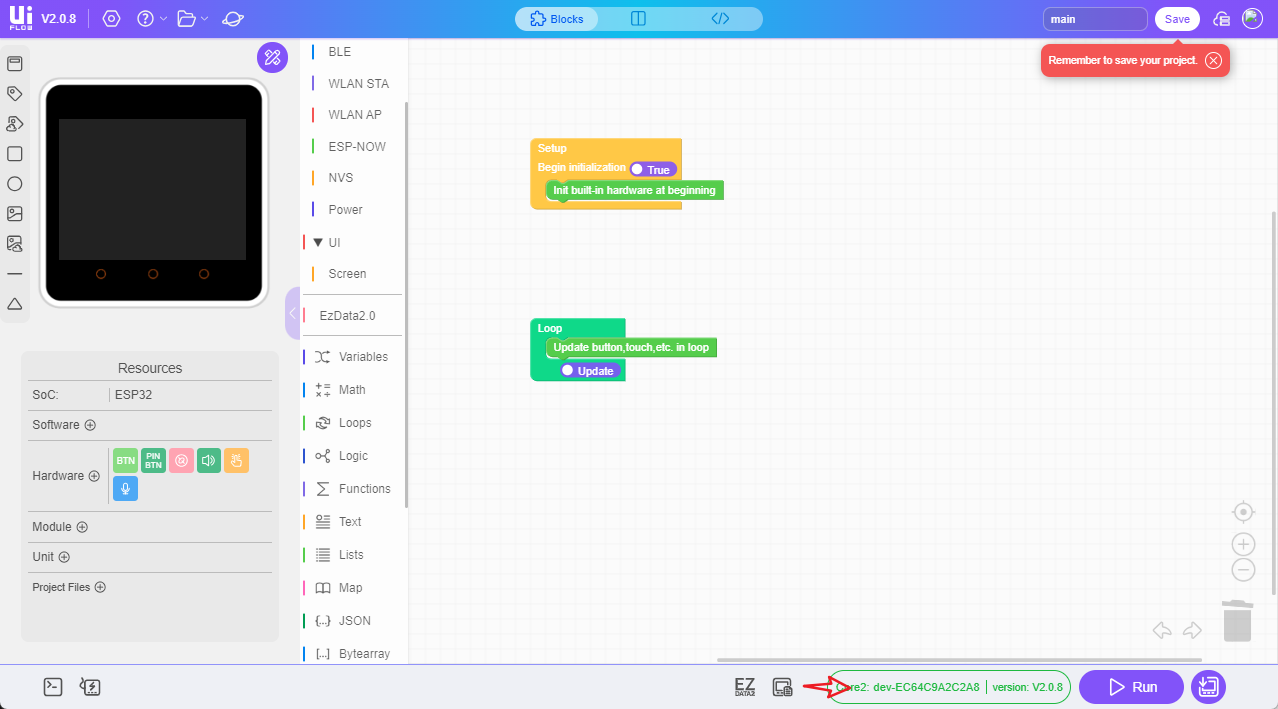
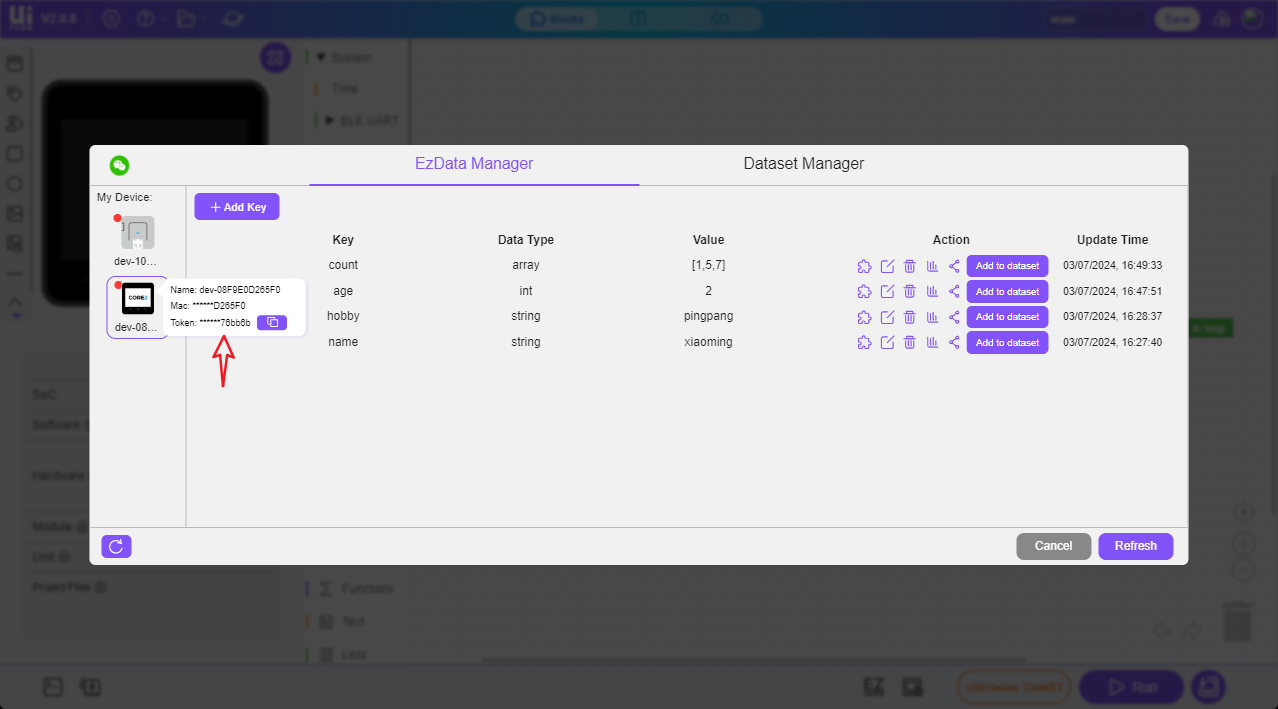
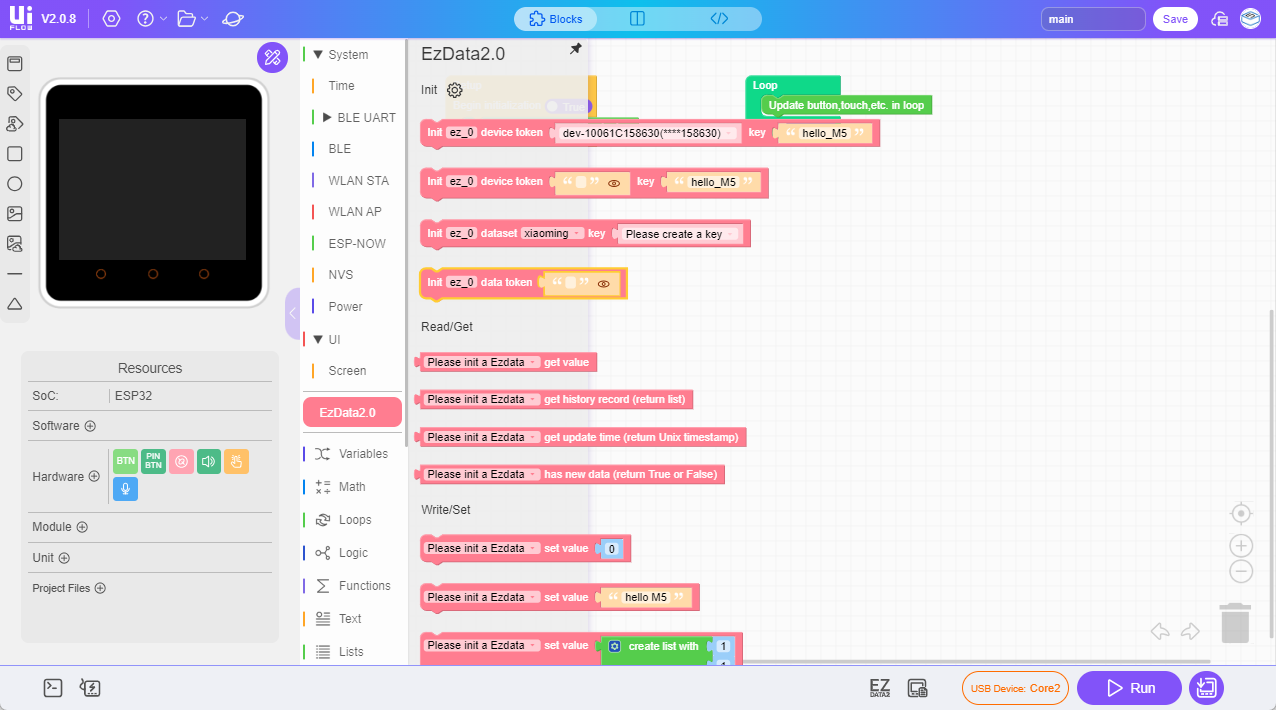
Debugging with EzData Dashboard
The EzData Dashboard is a visual platform for managing cloud data storage for all devices associated with the current account. It allows for basic data operations through backend API calls.
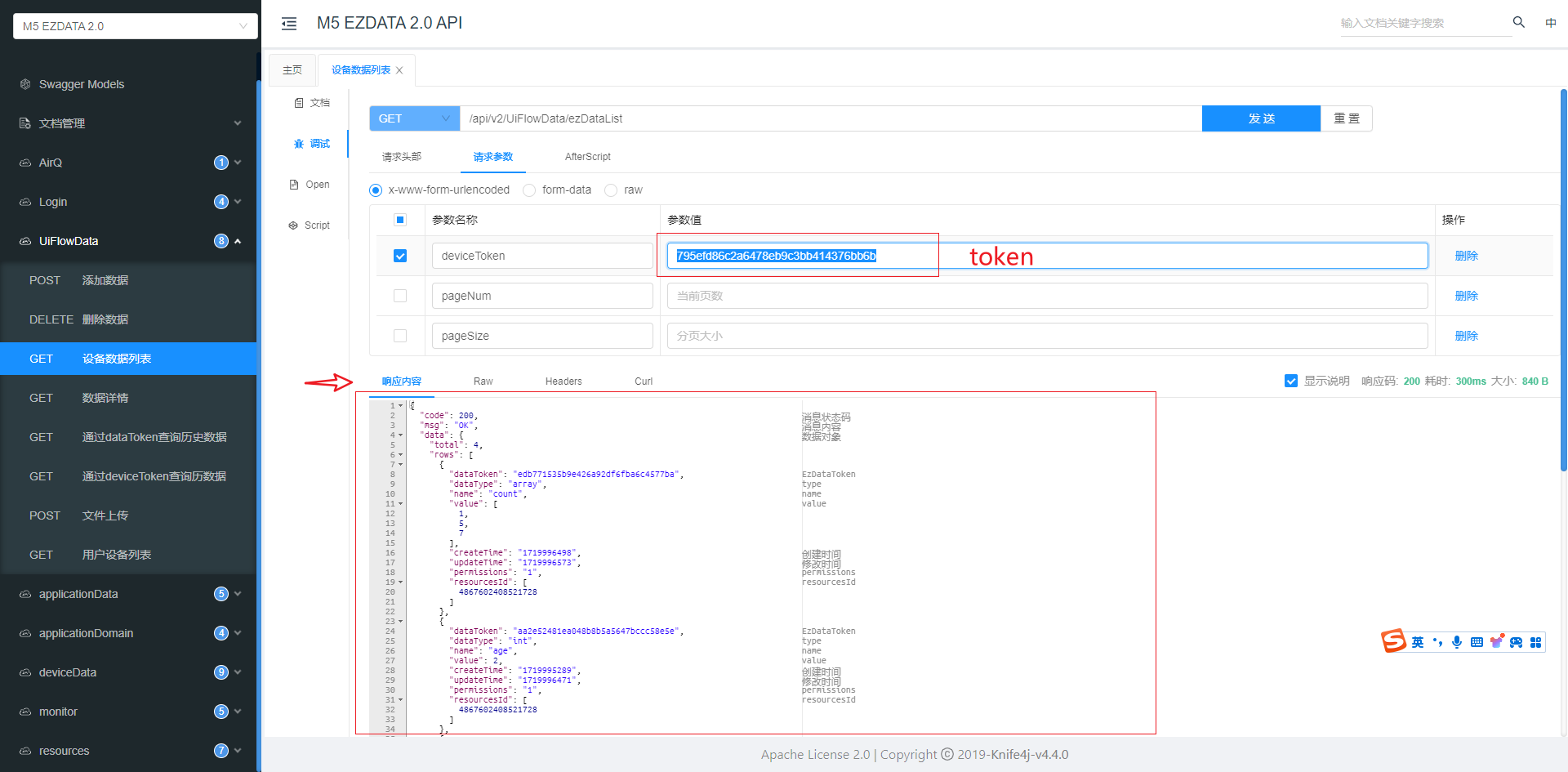
the unique token, which remains fixed within the same browser environment. Please copy the token before use.2. If no data operations are performed within six months, the data queue corresponding to that token will be cleared.
3. Data is sorted in descending order based on insertion time (the last inserted data appears at the top of the list), and data accumulates over time.